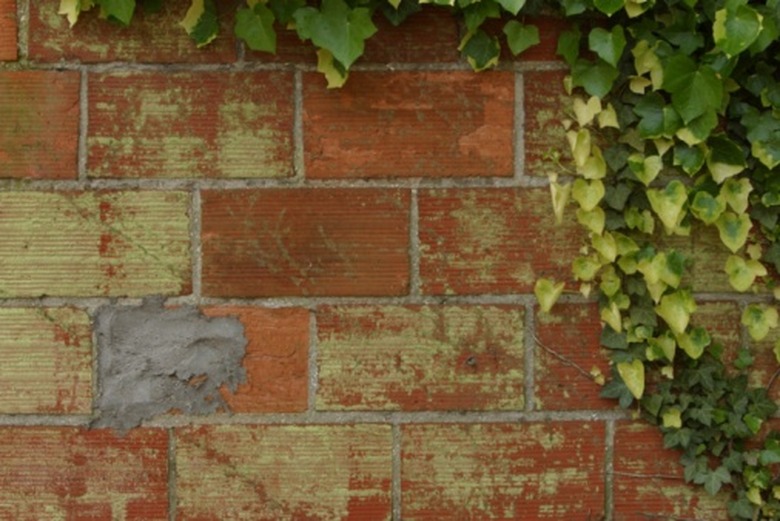How To Dissolve Ivy Roots From A Wall
Things Needed
-
Plastic scraper
-
Nylon scrub brush
-
Clean bucket
-
Stirring utensil
-
1 tbsp. mild liquid detergent
-
Plastic drop cloths
-
Garden hose
Tip
You may sand siding and other smooth wall surfaces with an orbital sander to detach stubborn ivy roots and tendrils.
Warning
Wire brushes and other stiff bristled brushes and may scratch walls.
Distinguished by its slender stalks and dark green leaves, Boston ivy is the most prevalent type of climbing ivy. Boston ivy uses its gripping tendrils to climb the exterior walls of buildings. Although climbing ivy can beautify home exteriors, its roots eventually damage bricks, mortar and other masonry. Removal of ivy is vital to the preservation of masonry surfaces. Simply removing ivy leaves and stems is not enough, as tiny roots and fuzzy tendrils remain firmly adhered to walls. Since ivy roots become more firmly stuck onto walls over time, you should remove the roots promptly using basic supplies.
Step 1
Scrape whole ivy roots gently off the wall using a plastic scraper. Detach as many whole roots as possible.
Step 2
Examine the wall for remaining root fragments and fuzzy tendrils. Gently scrub the root fragments and fuzzy tendrils off the wall's surface using a nylon scrub brush. Remove as many root fragments and tendrils as possible.
Step 3
Prepare a mild detergent solution if stubborn root fragments, tendrils and dried residue remain. In a clean bucket, stir together 1 gallon of water with 1 tbsp. of mild liquid detergent.
Step 4
Cover any foliage near the wall's base with plastic drop cloths. Protecting vegetation from even mild detergent solutions is essential.
Step 5
Scrub the remaining root fragments, tendrils and dried residue off the wall using the mild detergent solution and nylon scrub brush. Completely dissolve all dried residue on the wall.
Step 6
Rinse the wall thoroughly with fresh water from a garden hose.
